Russian Federation
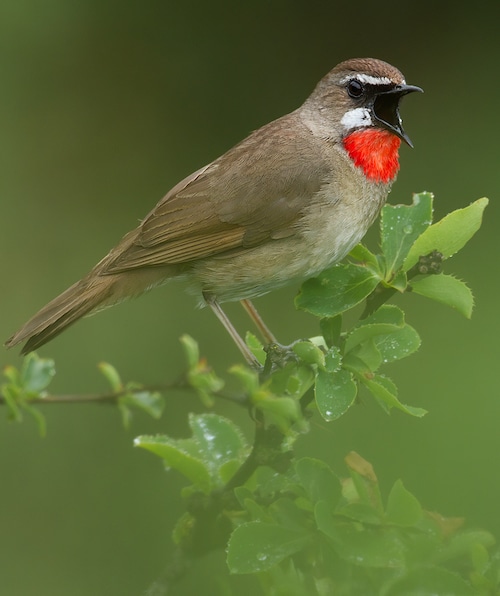
Russia is a country spanning Eastern Europe and North Asia. It is the largest country in the world by area, covering 17,098,246 km2 (6,601,670 square miles). It extends across eleven time zones and sharing land borders with fourteen countries. It is the world’s ninth-most populous country with around 146 million people; Europe’s most populous country. Russia is a highly urbanised country including 16 population centres with over a million inhabitants. Its capital and largest city is Moscow with well over 12 million inhabitants. Saint Petersburg is Russia’s second-largest city with more than 5.5 million citizens and is its cultural capital.
Russia has nine major mountain ranges, and they are found along the southernmost regions, which share a significant portion of the Caucasus Mountains (containing Mount Elbrus, which at 18,510 feet is the highest peak in Russia and Europe); the Altai and Sayan Mountains in Siberia; and in the East Siberian Mountains and the Kamchatka Peninsula in the Russian Far East (containing Klyuchevskaya Sopka, which 15,584 feet is the highest active volcano in Eurasia). The Ural Mountains, running north to south through the country’s west, are rich in mineral resources, and form the traditional boundary between Europe and Asia. The lowest point in Russia and Europe, is situated at the head of the Caspian Sea, where the Caspian Depression reaches some 29 metres (95 feet) below sea level.
Russia, as one of the world’s only three countries bordering three oceans, has links with a great number of seas. Its major islands and archipelagos include Novaya Zemlya, Franz Josef Land, Severnaya Zemlya, the New Siberian Islands, Wrangel Island, the Kuril Islands (four of which are disputed with Japan), and Sakhalin. The Diomede Islands, administered by Russia and the United States, are just 3.8 km (apart; and Kunashir Island of the Kuril Islands is merely 20 km from Hokkaido, Japan.

Yugyd Va National Park – Largest National Park in Europe – ©xndr, Public domain, via Wikimedia Commons
Russia has over 100,000 rivers, and has one of the world’s largest surface water resources, with its lakes containing approximately one-quarter of the world’s liquid fresh water. Lake Baikal, the largest and most prominent among Russia’s fresh water bodies, is the world’s deepest, purest, oldest and most capacious fresh water lake, containing over one-fifth of the world’s fresh surface water. Ladoga and Onega in northwestern Russia are two of the largest lakes in Europe. It is second only to Brazil for total renewable water resources. The Volga in western Russia, widely regarded as Russia’s national river, is the longest river in Europe; and forms the Volga Delta, the largest river delta in the continent. The Siberian rivers of Ob, Yenisey, Lena, and Amur are among the world’s longest rivers.
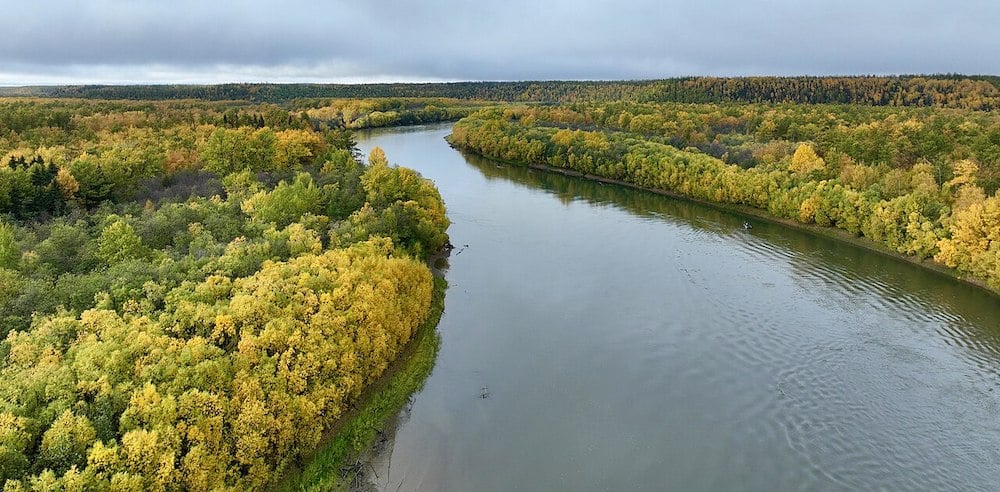
Kamchatka River – ©Rubin16, CC BY-SA 4.0 via Wikimedia Commons
The size of Russia and the remoteness of many of its areas from the sea result in the dominance of the humid continental climate throughout most of the country, except for the tundra and the extreme southwest. Mountain ranges in the south and east obstruct the flow of warm air masses from the Indian and Pacific oceans, while the European Plain spanning its west and north opens it to influence from the Atlantic and Arctic oceans. Most of northwest Russia and Siberia have a subarctic climate, with extremely severe winters in the inner regions of northeast Siberia (mostly Sakha, where the Northern Pole of Cold is located with the record low temperature of −71.2 °C and more moderate winters elsewhere. Russia’s vast coastline along the Arctic Ocean and the Russian Arctic islands have a polar climate.
The coastal part of Krasnodar Krai on the Black Sea, most notably Sochi, and some coastal and interior strips of the North Caucasus possess a humid subtropical climate with mild and wet winters.[246] In many regions of East Siberia and the Russian Far East, winter is dry compared to summer; while other parts of the country experience more even precipitation across seasons. Winter precipitation in most parts of the country usually falls as snow. The westernmost parts of Kaliningrad Oblast and some parts in the south of Krasnodar Krai and the North Caucasus have an oceanic climate. The region along the Lower Volga and Caspian Sea coast, as well as some southernmost slivers of Siberia, possess a semi-arid climate.
Throughout much of the territory, there are only two distinct seasons, winter and summer; as spring and autumn are usually brief. The coldest month is January (February on the coastline); the warmest is usually July. Great ranges of temperature are typical. In winter, temperatures get colder both from south to north and from west to east. Summers can be quite hot, even in Siberia. Climate change in Russia is causing more frequent wildfires, and thawing the country’s large expanse of permafrost.
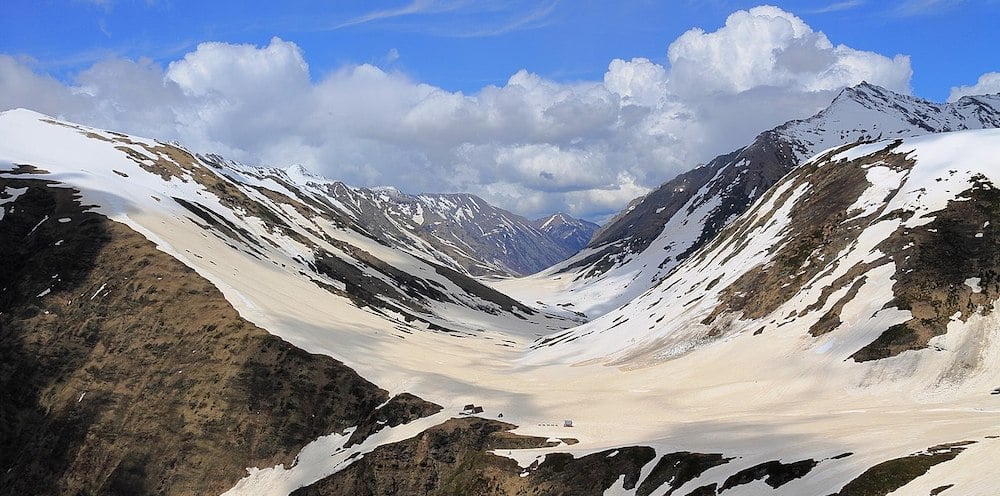
Caucasus Biosphere Reserve – ©SKas, CC BY-SA 4.0 via Wikimedia Commons
Russia’s entirely natural ecosystems are conserved in nearly 15,000 especially protected natural territories of various statuses, occupying more than 10% of the country’s total area. They include 45 biosphere reserves, 64 national parks, and 101 nature reserves. Although in decline, the country still has many ecosystems which are still considered intact forest; mainly in the northern taiga areas, and the subarctic tundra of Siberia.
Birding the Russian Federation
Russia, owing to its gigantic size, has diverse ecosystems, including polar deserts, tundra, forest tundra, taiga, mixed and broadleaf forest, forest steppe, steppe, semi-desert, and subtropics. About half of Russia’s territory is forested, and it has the world’s largest area of forest, which sequester some of the world’s highest amounts of carbon dioxide.
Russian fauna is composed of 320 species of mammals, over 800 species of birds, 75 species of reptiles, about 30 species of amphibians, 343 species of freshwater fish (with high endemism), approximately 1,500 species of saltwater fishes and approximately 100–150,000 invertebrates (again with high endemism). Approximately 1,100 rare and endangered plant and animal species are included in the Russian Red Data Book.
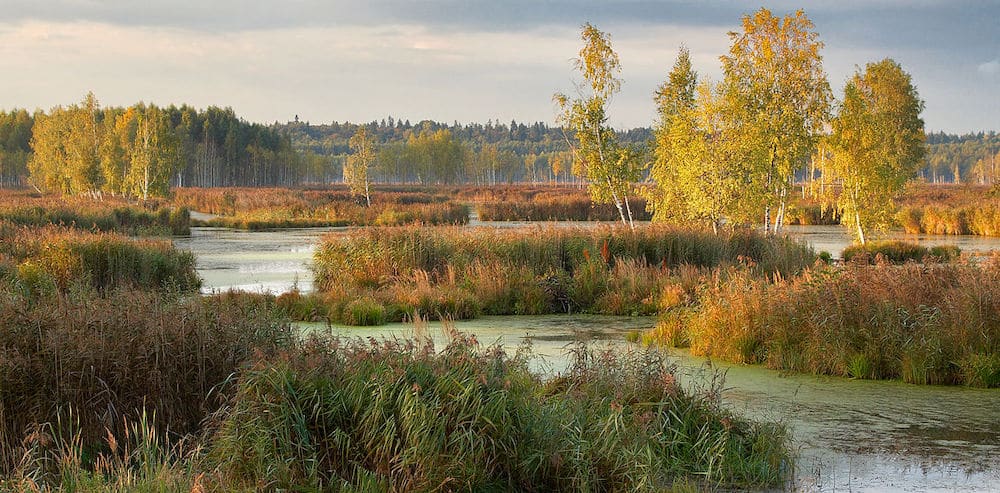
Losiny Ostrov National Park – ©Nikiforovvb, CC BY-SA 4.0 via Wikimedia Commons
The terrain consists of broad plains with low hills west of the Urals; vast coniferous forest and tundra in Siberia; uplands and mountains along the southern border regions. The country is contained entirely within the Palaearctic geographical region although Kamchatka, in the extreme east, shows a close relationship with Northern Alaskan in its avifauna, the narrow Bering Sea hardly acting as an efficient barrier for bird movement.
The territory of Russia occupies a significant part of the Eurasian continents. A distinctive feature is the presence of many different natural habitats. It has extensive forests; mountains & tundra as well as swamps and lakes; rivers and seacoasts. The combination of different types of landscape and different combinations of habitat creates different fauna types, or faunal groups. These include European deciduous forest and semi-Mediterranean, Siberian taiga, Chinese, Japanese, Mongolian desert, Tibetan mountains and others. However, despite its large territory the number of birdwatchers is small and they are concentrated around the Russian Bird Conservation Union and its regional branches. Professional ornithologists are concentrated in universities, reserves and research institutes.
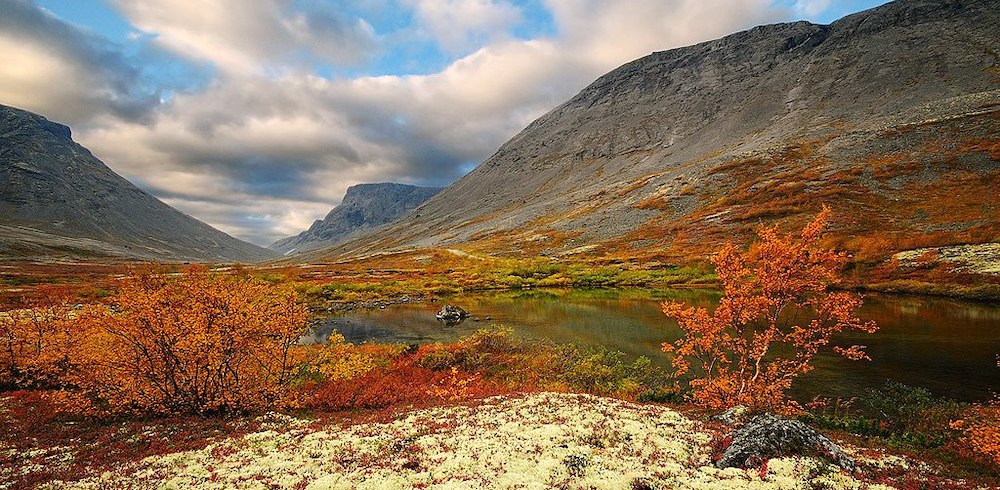
Khibiny National Park – ©Лада Евдокимова, CC BY-SA 4.0 via Wikimedia Commons
There are a bewildering array of regions, districts, autonomous regions, city districts and other political subdivisions in Russia. Rather than dedicate a birding page to each we have chosen to split the huge landmass into several super-regions which have similar climates, avifaunal habitats and so forth.
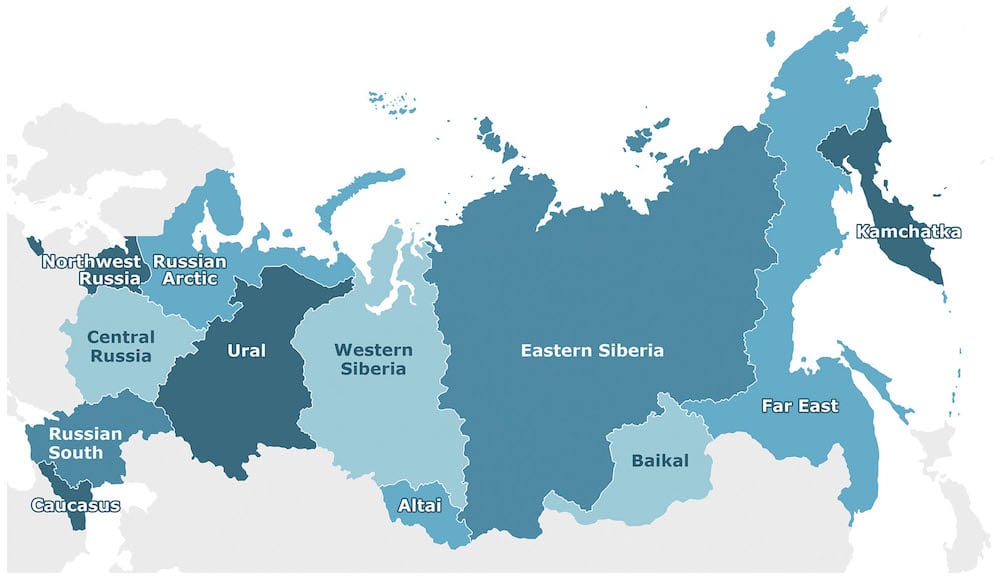
-
Jeff Gordon
| jeffandolga@gmail.com
-
Andrey N. Baykalov
https://birds.sfu-kras.ru
-
Number of bird species: 819
(As at April 2025)
Number of endemics: 2
Siberian Grouse Falcipennis falcipennis
Siberian Nuthatch Sitta arctica- There are 14 Breeding Endemics (Only breed in Russia)
Red-breasted Goose Branta ruficollis
Baikal Teal Sibirionetta formosa
Little Curlew Numenius minutus
Gray-tailed Tattler Tringa brevipes
Great Knot Calidris tenuirostris
Spotted Greenshank Tringa guttifer
Sharp-tailed Sandpiper Calidris acuminata
Curlew Sandpiper Calidris ferruginea
Spoon-billed Sandpiper Calidris pygmaea
Red-necked Stint Calidris ruficollis
Steller's Sea-Eagle Haliaeetus pelagicus
Siberian Crane Leucogeranus leucogeranus
Dusky Thrush Turdus eunomus
Yellow-browed Bunting Emberiza chrysophrys
-
Avibase
PDF ChecklistThis checklist includes all bird species found in Russian Federation , based on the best information available at this time. It is based on a wide variety of sources that I collated over many years. I am pleased to offer these checklists as a service to birdwatchers. If you find any error, please do not hesitate to report them. -
E-Bird
PDF ChecklistThis checklist is generated with data from eBird (ebird.org), a global database of bird sightings from birders like you. If you enjoy this checklist, please consider contributing your sightings to eBird. It is 100% free to take part, and your observations will help support birders, researchers, and conservationists worldwide. -
Wikipedia
Annotated ListThis is a list of the bird species recorded in Russia. The avifauna of Russia include a total of 810 species, 3 of which are endemic, 68 species are globally threatened, and 2 species are extinct.
-
A Field Guide to the Birds of Russia and Adjacent Territories
| (former USSR) | By VE Flint, RL Boehme, YV Kostin & AA Kutnetsov | Princeton University Press | 1989 | Paperback | 353 pages, 48 col plates, 71 line drawings, 303 maps | Out of Print | ISBN: 9780691024301 Buy this book from NHBS.com -
Birds of Central Asia
| Kazakhstan, Turkmenistan, Uzbekistan, Kyrgyzstan, Tajikistan, Afghanistan | By Raffael Ayé, Manuel Schweizer & Tobias Roth | Helm | 2012 | Paperback | 336 pages, 141 plates with colour illustrations; 14 colour photos, 5 b/w illustrations, 3 colour maps, colour distribution maps | ISBN: 9780713670387 Buy this book from NHBS.com -
Birds of Europe, North Africa, and the Middle East
| Photographic Guide | By Frédéric Jiguet & Aurélien Audevard | PUP | 2017 | Paperback | 447 pages, 2200 colour photos, colour distribution maps | ISBN: 9780691172439 Buy this book from NHBS.com -
Birds of Europe, Russia, China, and Japan
| (Non-Passerines, Loons to Woodpeckers) | by Norman Arlott | Princeton University Press | 2009 | Paperback | 240 pages, 80 plates with colour illustrations, 700 colour distribution maps | Out of Print | ISBN: 9780691136851 Buy this book from NHBS.com -
Birds of Europe, Russia, China, and Japan
| (Passerines, Tyrant Flycatchers to Buntings) | by Norman Arlott | Princeton University Press | 2007 | Paperback | 240 pages, 80 plates with colour illustrations; 706 colour distribution maps | Out of Print | ISBN: 9780691133720 Buy this book from NHBS.com -
Collins Bird Guide
| By Lars Svensson | Harper Collins | Edition 3 | 2023 | Paperback | 478 pages, 4000+ colour illustrations, 700 colour distribution maps | ISBN: 9780008547462 Buy this book from NHBS.com -
Where to Watch Birds in Europe & Russia
| By Nigel Wheatly | Christopher Helm | 2000 | Paperback | 416 pages, 50 illustrations, 100 maps | Out of Print | ISBN: 9780713648706 Buy this book from NHBS.com

Collins Bird Guide
AndroidThe Collins Bird Guide App provides everything you need to identify a species quickly and learn about it thoroughly.
Collins Bird Guide
Apple iOS |Collins Bird Guide 4+ A field guide to Europe NatureGuides Ltd. Designed for iPadMuseums & Universities-
State Darwin Museum of Natural History - Moscow
WebsiteThe museum has an extensive bird collection. -
The Russian State Museum of Arctic and Antarctic
WebsiteIn November 1930 the museum was founded by the order of the Soviet Government as a Department of the Arctic Research Institute called the Arctic Museum, based on exhibits and material of Polar Exhibitions which were held in Leningrad, Moscow, Arkhangelsk during 1923.Marata 24a, The Russian State museum of Arctic and Antarctic, St.Petersburg, Russia, 191040 Phone: +7 812 1131998. Fax: +7 812 1646818. E-mail: vicaar@mail.wplus.net Director: Dr. Victor I. Boyarsky -
Zoological Museum of the Russian Academy of Sciences
WebsiteThe Zoological Institute of Russian Academy of Sciences is the leading zoological institution in Russia and one of the most significant zoological institutions in the world.
Organisations-
Bird Ringing Center of Russia (BRC)
WebsiteThe history of Russia’s Bird Ringing and Scientific-Information Center of Russia began in 1924. It was moved to the Institute of Animal Ecology and Evolution of the Academy of Sciences of the USSR in 1970 and became a separate department in 1984. -
BirdsRussia
WebsiteBirdsRussia is a voluntary non-profit public Association created for joint activity on protection and study of birds of the Russian Federation. -
RBCU - Russian Bird Conservation Union
WebsiteShosse Entuziastoy 60, Building 1, Moscow 111123. + 7 095 1761063; rbcu@online.ru RBCU) was established on7 February 1993. Russian Bird Conservation Union (RBCU) is a non-governmental public organization which activity is focused on informing, education and joining wide circles of people to the protection of Russian bird diversity -
RRRCN - Russian Raptor Research & Conservation Network
WebsiteRussian Raptor Research and Conservation Network is a non-governmental association of ornithologists, birdwatchers, ornithological and environmental organizations, which in cooperation seek to learn the birds of prey and owls that live in the vast territory of Russia and neighboring countries and promote their conservation. Anybody, who is interesting to observe birds of prey, any organization, whose activities are connected with the study and conservation of raptors, may become a member of the Network -
Siberian Birdwatching Community
Website
Reserves-
*Protected areas of Russia
InformationSatellite ViewNature parks, National Parks, Biosphere reserves, RAMSAR sites etc. -
NP Yugud-Va National Park
WebpageSatellite ViewThe natural park Yugud-Va is one of the largest on the Earth. It is nearly 1,2 million hectares. It is on the seventh place among ten largest parks in the world. In 1995 it's territory was included into the list of the World Natural Legacy of UNESCO. It is the first Russian national park wich was included in this list. -
Russian National Parks
WebsiteSatellite ViewLinka and write-ups on a number of parks… -
Wetlands
WebpageSatellite ViewThe Russian Federation currently has 35 sites designated as Wetlands of International Importance (Ramsar Sites), with a surface area of 10,323,767 hectares.
Guides & Tour Operators-
BirdQuest
Tour OperatorRUSSIA’S RING OF FIRE: SAKHALIN, KURILS, KAMCHATKA & COMMANDERS – seabirds galore, including Whiskered Auklet -
Branta Tours
Tour OperatorBirding in Central Siberia -
Ecological Travel Centre
Local Tour OperatorThe Ecological Travel Center (ETC) was created in 1998 by graduates of Moscow State University under the supervision and support of the Biodiversity -
Eurasian Birding Tours
Local Tour OperatorRussia is home to over 700 species of birds, some of which are rare, or endemic to Russia. Many bird watching expeditions will take you to either the national parks, or to wildlife preserves, which proliferated during the past two decades. All bird watching tours organized by Sergei Shushunov are conducted by professional guides with a degree in wildlife biology. -
NatureTrek
Tour OperatorKamchatka & Chukotka - Russia's Ring of Fire -
Rockjumper
Tour OperatorThis is one of the remotest and least visited parts of our planet, and a new frontier for wildlife watchers. This region’s human population is minimal and vast areas of wilderness still exist, sadly a great rarity on our overpopulated planet! Although the area’s wildlife was severely impacted by the fur trade, whaling and other human activities during the late 18th century soon after it was “discovered” by westerners and several species became extinct (e.g. the giant Steller’s Sea Cow and Steller’s Cormorant) or nearly so (Sea Otter, Grey Whale), the populations of those that survived the initial onslaught have somewhat recovered. In the instance of Sea Otters, it is estimated that they are back up to their maximum carrying capacity in certain parts of the Russian Far East. -
Rubythroat Birding Tours
Local Tour OperatorRubythroat Birding Tours is a fully specialized all-inclusive tour company with ventures throughout Central Asia and Russia. Rubythroat Birding Tours Ltd., Aitykova 8, Ust-Kamenogorsk, BIN 130740019834 mailto:machiel@rubythroatbirdingtours.com
Trip Reports-
2016 [07 July] - Janne Aalto
ReportIt was already late spring and we had no real holiday plans with Hanna. Luckily I found out that my old friend Pierre-André Crochet was searching participants for their trip to Russia, Polar Ural. Immediately I sent a message to “PAC” and also to Eric Didner who was also going and after a week, we knew we were in! On the previous summer we had been in South and Central Ural on a trip that we had planned with Oleg Demyanenko from Ural Expeditions & Tours and he was our contact again. We had then also been planning a trip to Polar Ural but we had discussed that it would probably be after some years. Now it was going to happen much sooner! -
2019 [06 June] - Graham Talbot - Russian East Coast
PDF ReportDuring the trip we travelled over 2000 nautical miles starting at Petropavlovsk-Kamchatsky sailing north to the Commander Islands then back down the Kamchatka coast before Island hopping south along the Kuril’s and eventually heading north across the Sea of Okhotsk to Sakhalin.
Other Links-
Zoological Institute of the Russian Academy of Sciences - History of Ornithology
WebsiteThe most important basis for the research done at the Department of Ornithology is its rich collection obtained due to hard effort of many generations of zoologists. These are bird skins, alcohol specimens, skeletal and paleontological materials. The richness, diversity and completeness of the Department
Photographers & Artists-
Library - Russian Wildlife Photograph Library
GalleryLots of excellent images
Fatbirder - linking birders worldwide...
Skip to content
